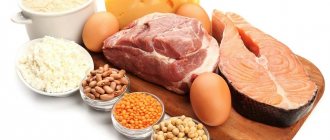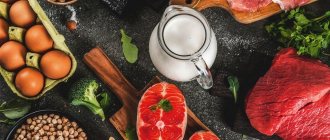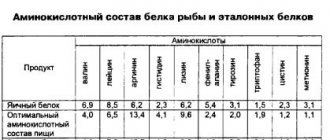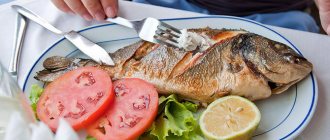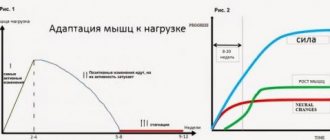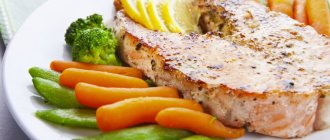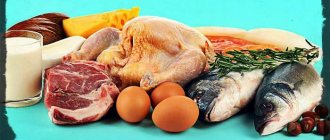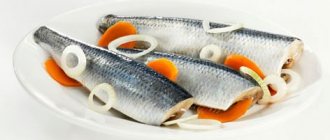Sports require strength and endurance. The source of energy needed by a novice athlete or a professional is food. Before training, it supplies energy, after training, it restores losses and “builds” muscle mass. To speed up this process, stick to a balanced diet. The products include:
- proteins, carbohydrates, fats in balanced proportions;
- vitamins and minerals;
- amino acids.
Polished white and “wild” (unprocessed) rice is a storehouse of energy, proteins, vitamins and minerals.
Unprocessed rice
Therefore, it is loved by those involved in strength sports and fitness. In Asian countries, rice is the main source of nutrition. Nutritionists recommend including the product in the daily diet of Europeans.
Properties
The widespread cereal crop has long been used as food as cereal, bran, drinks, and sweets for the tea ceremony in the east. Straw was used to make rice paper and cardboard. The grain was appreciated by people who watch their weight and figure and adhere to a gluten-free diet. Rice removes toxins and water from the body.
Let's look at the composition of rice to see the benefits of dishes based on it:
- The source of B vitamins is thiamine (converts nutrients into energy), niacin (fat metabolism, tissue respiration), riboflavin (responsible for the condition of skin and hair, synthesizes hemoglobin).
- Amino acids that form new cells. Unprocessed rice grains contain 6-8 percent protein, the building material of the skeleton and muscles.
- Lecithin has a beneficial effect on brain cells.
- Mineral elements. Potassium neutralizes sodium salts and removes water. Magnesium has a beneficial effect on the central nervous system. Zinc synthesizes protein and activates immune processes. Calcium strengthens the bone skeleton, nails, teeth.
- Half of rice grains consist of starch, a source of energy. Enters the intestines in unchanged form. Leads to the growth of beneficial microflora in the intestines. Combats diarrhea and irritable bowel syndrome by gently coating cells.
- Dietary fiber is found in brown, brown, and wild rice.
Rice is a “slow” source of energy. Does not raise glucose levels, having a glycemic index of 50 units. This property is suitable for taking rice before and after strength training in sports. 100 grams of rice contains: 312 - 400 kcal, cereal dishes are suitable for diets and fasting days.
Nutritionists note the low sodium content and recommend rice dishes for hypertensive patients. In addition, the potassium contained in the grains removes excess sodium from the body. Coaches draw the attention of their players to protein (8 grams in 100 grams of unprocessed rice grain). The absence of gluten (gluten) is indicated for people with a genetic predisposition to negative reactions to this protein. In this case, the immune system reacts to gluten as a foreign protein. As a result of an “attack on a stranger,” the gastrointestinal tract, joints, and heart are affected.
Great Top Ten Protein-Rich Foods
Here are the ten most protein-rich foods, expressed as a percentage of their weight:
- Fish – different types contain from 15% to 25%.
- Cheeses – up to 30%. However, they are very high in calories. For example, the energy value of edam cheese is 352 kcal per 100 g, cheddar cheese is 392 kcal per 100 g. Therefore, cheeses are minimized in the diet of weight loss programs.
- Cottage cheese – from 0 to 14-20%. For diets, it is recommended to eat low-fat cottage cheese.
- Beef – 25%. It is preferable to eat veal or meat of young animals up to a year old, stewed or boiled.
- Poultry (chicken, turkey) – 15-20%. The calorie content of poultry meat is quite low. Brisket is the richest in proteins; moreover, it is also low-fat, so it is ideal for diets.
- Chicken eggs – 17%. Eggs are perfectly absorbed in the gastrointestinal tract, their calorie content is low and they do not contribute to the growth of the fat layer. Eggs can be eaten raw or boiled, as well as in the form of omelettes or scrambled eggs.
- Liver – 25%. Inexpensive by-product. It is perfectly digestible when steamed, crushed into pates and pastes, and stewed.
- Cereals - on average 10-12%. They are perfectly absorbed and contribute to the digestion process. From the point of view of nutrition and sports medicine, cereal side dishes are preferable to potato and pasta.
- Brussels sprouts – 9%. The highest protein content among vegetables. Other vegetables are saturated with proteins by an average of only 0.5-2.0%. The best way to cook Brussels sprouts is by steaming, sautéing or boiling.
- Soybean – 14%. This legume serves as a meat substitute in dietary cooking, vegetarian diets, and can be eaten by believers during religious fasts. Well absorbed. An interesting fact is that there are no less essential amino acids in beans than in meat.
Types of rice
Brown rice
There are 20 types of rice known in the world. Traditionally, white (polished) rice that has undergone technological processing is consumed in Russia. A popular unpolished product among athletes is brown rice. Let's consider how justified this is.
- White rice is popular in all countries. The Japanese prefer this product: they are confident that the destroyed shell during processing does not change the structure of the grain. It contains a sufficient amount of nutrients. Polished grain is prepared in 15 – 20 minutes. White rice restores energy after workouts.
- Brown rice retains its “primordial” nutritional value, microelements, and vitamins. Unprocessed grain with preserved shell contains fats. This is the only drawback of the product. If stored for a long time, the grain will go rancid and become tasteless. The unprocessed grain takes longer to cook than white rice and has an elastic consistency.
- Parboiled rice combines the benefits of white and brown grains. Steam treatment technology allows the kernel to absorb valuable nutrients and vitamins from the shell. The resulting grains of rice are yellowish in color. After cooking, the grain becomes white and soft. There are no fats, the dry product is stored for a long time. Ideal for cooking pilaf.
- Red rice is a rare guest on the Russian table. Unpolished cereal is superior in calorie content to its counterparts: 400 kcal in 100 grams of dry grain. Glycemic index is below 45 percent. Compared to brown grains, the composition contains an increased amount of copper, iodine, molybdenum, and calcium. Nutritionists consider red grains to be the most nutritious in the “rice line”; they recommend eating dishes based on red rice one and a half to two hours before sports activities. “Slow” carbohydrates will perfect the bodybuilder’s energy balance. The red shell is enriched with potassium and magnesium - good for joints, acts as an anti-stress agent.
- Long grain rice – grain size starts at 8 millimeters and is white or brown. This group includes several types of cereals. Basmati came to Russia not so long ago. Previously, it was appreciated in China, India, Pakistan, and America. Long yellowish grains with a nutty aroma gain hardness within a year of harvest. During the cooking process it increases by one and a half to two times. The glycemic index is lower than white rice. Athletes, knowing this property, balance their energy levels on the eve of competitions. On other days, they eat basmati before training. Therapists do not recommend using it often - it causes an increase in amylase in the blood. Jasmine rice with a subtle spicy aroma. White grains of rice are appreciated by lovers of exotic foods. It is prepared in the same way as a steamed product. Wild rice, rich brown or black in color, is superior to cultivated rice in energy value and mineral and vitamin composition. It takes 40-50 minutes to prepare and requires additional soaking. Energy value per 100 grams is 312 kcal.
- Short grain rice lost 15-20 percent of its beneficial properties during processing. Still retained vitamins B, E, potassium, magnesium, selenium, copper, phosphorus. When grinding, I gained kilocalories: 350 per 100 grams of product. The product is popular among housewives - it is prepared quickly, used for milk porridges, puddings, and casseroles.
Small conclusions
If you came to my blog to know whether an athlete needs rice, then the answer is unequivocal - yes. And there are many reasons:
- nutritional value and low calorie content;
- contains amino acids necessary for building muscles;
- protects against metabolic syndrome;
- strengthens the nervous system;
- will be useful for drying and when working out the relief;
- promotes weight loss as it has a low glycemic index.
And finally, another video recipe for cooking rice from a pro.
https://youtu.be/qgItM6mDzlA
So feel free to include rice in your diet in any form to feel better. The main thing is to avoid “empty” white and black cereals. And then the results of grueling training will soon become noticeable. Good luck!
How to use?
Dishes based on white or brown rice are loved by children and adults. Athletes who care about their body and performance should get the maximum benefit from the grain. Some tips:
- during the period of weight gain and muscle mass, include rice dishes in the menu every day;
- eat grains in the first half of the day: an hour and a half before training, prefer brown rice, after training – white rice;
- rice provides beneficial properties in combination with vegetables - carrots, green peas, beans, asparagus;
- Seafood increases the nutritional value of cereal dishes - try sushi and rolls a couple of times a week;
- sweet peppers stuffed with brown rice have a spicy taste;
- rice therapy is suitable for those who decide to remove salts, improve joint health, and cleanse the genitourinary system;
- buy rice in bags - the steamed product is easy to prepare;
- Do not salt rice dishes - add seaweed and dried spices.
Arsenic in rice[edit | edit code]
Appearance of Cooked Brown Rice
In 2012, Consumer Reports called on the government to limit the amount of arsenic in rice after examining more than 60 popular foods that contained it. Most products contained the carcinogen inorganic arsenic.[4]
After this FDA statement, the American food control organization began to actively conduct research on many varieties of rice and rice products. The first results of the analysis of 200 rice varieties were published in September 2012.[5] The average amount of inorganic arsenic in rice was between 2.6 and 7.2 μg per serving of rice grains. The highest concentration of non-limited arsenic is found in brown rice (up to 11 mcg per serving), which is currently highly popular and one of the most expensive varieties of rice. It was also noted that the amount of carcinogen was different in one variety of rice, but collected in different areas. The FDA explained this by different environmental conditions in the regions.
In February 2020, the FDA announced that it had thoroughly examined 1,300 samples of rice and rice products and concluded that the levels of arsenic in them were not high enough to cause any adverse health effects. In the future, the FDA informs everyone, research will continue. Their goal will be to determine the effects of long-term exposure to low levels of arsenic in rice on the human body. The highest concentration is found in brown rice. In other products, the amount of arsenic was 0.1-6.6 μg. Moreover, in products for infants its content is lowest, and in pasta products it is highest.[6]
A study[7] was published in 2020 highlighting the issue of infants' consumption of rice products that contain elevated levels of arsenic.
Carbohydrates
Let's move on. Carbohydrates are the best source of energy. We think that you remember the most important principle in nutrition: you need to get more energy than you expend during the day. Only a figure of 50-60% carbohydrates in the diet should already indicate the importance of this nutrient. In principle, there should be 2 times more of them than protein, that is, 3.5-4 grams per 1 kg of body weight. It is worth noting that with them the story is approximately the same as with proteins (the presence of animal and vegetable), because carbohydrates are divided into simple (sweets) and complex (pasta, cereals). The former, in turn, cause a huge jump in insulin, which is why they are absorbed by the body extremely quickly. This often leads to the accumulation of subcutaneous fat.
Now you understand why eating sweets is harmful (however, fruits are rich in vitamins and fiber, and therefore cannot be neglected). on the contrary, they are absorbed quite slowly (several hours), which allows you to gradually saturate the body with the necessary energy.

